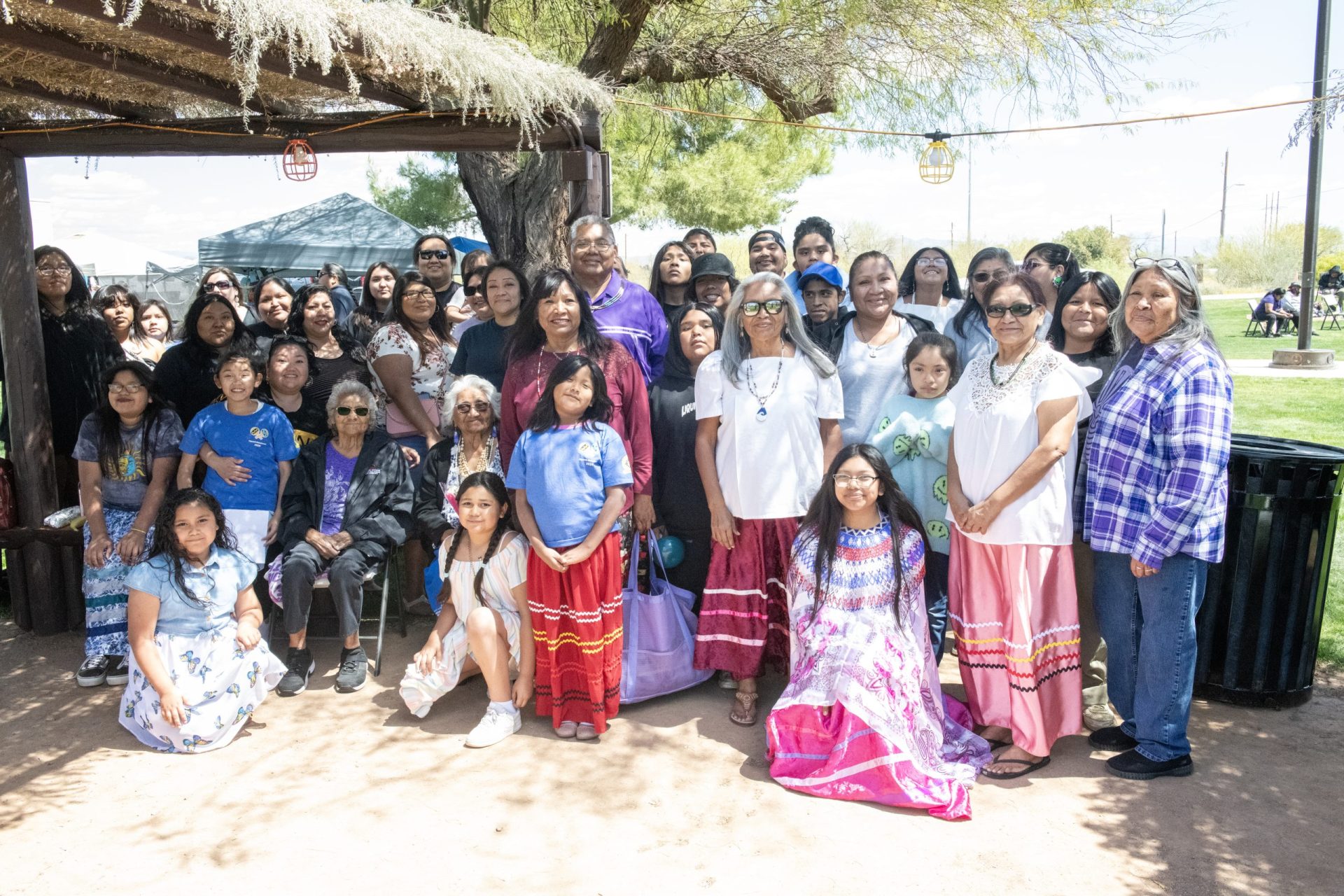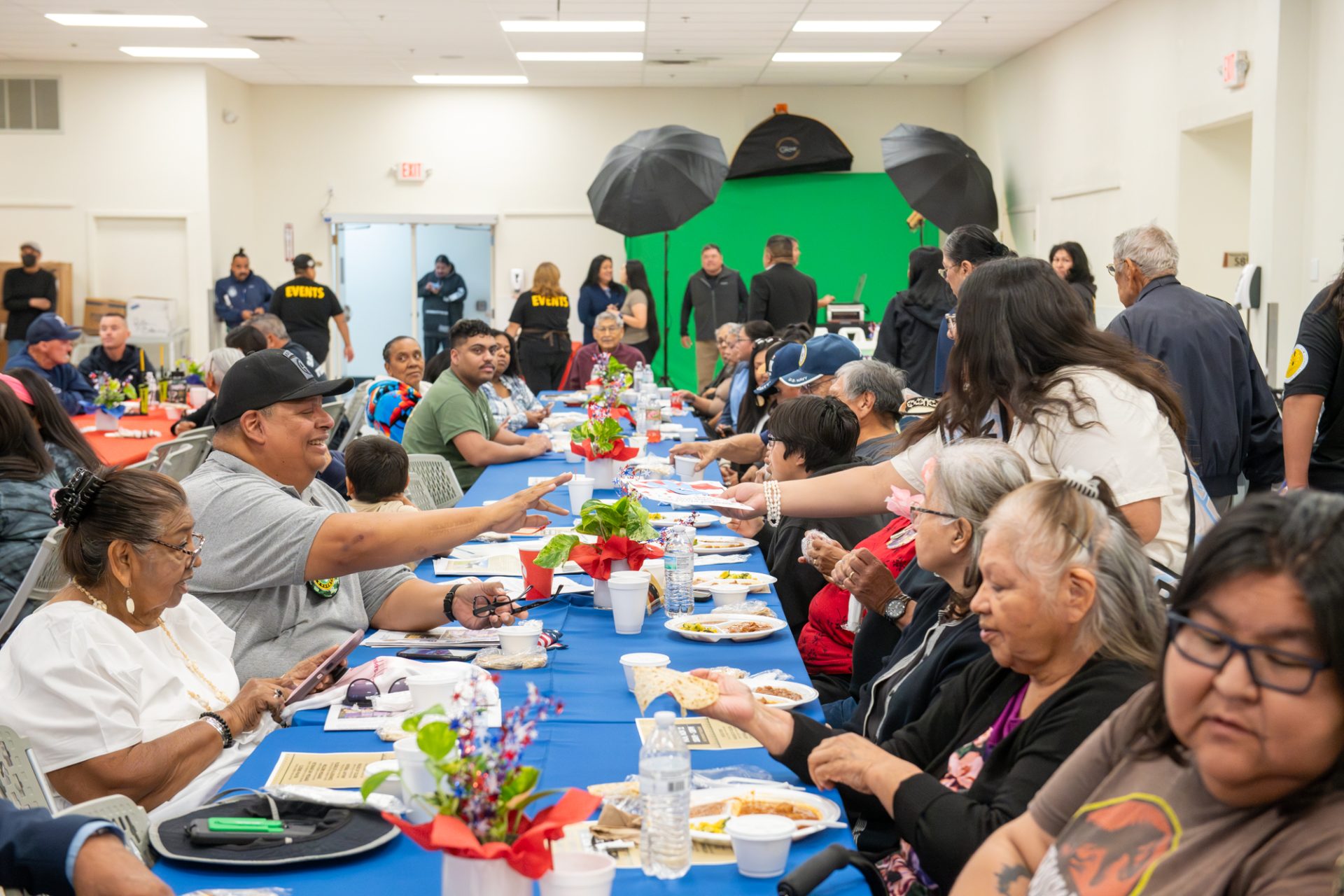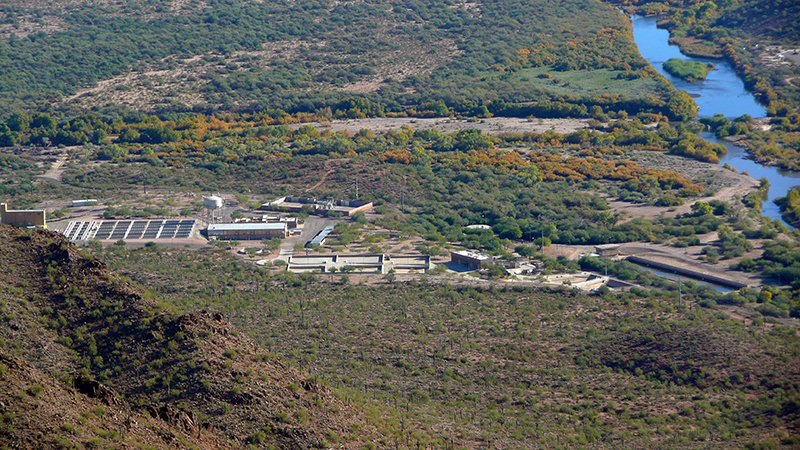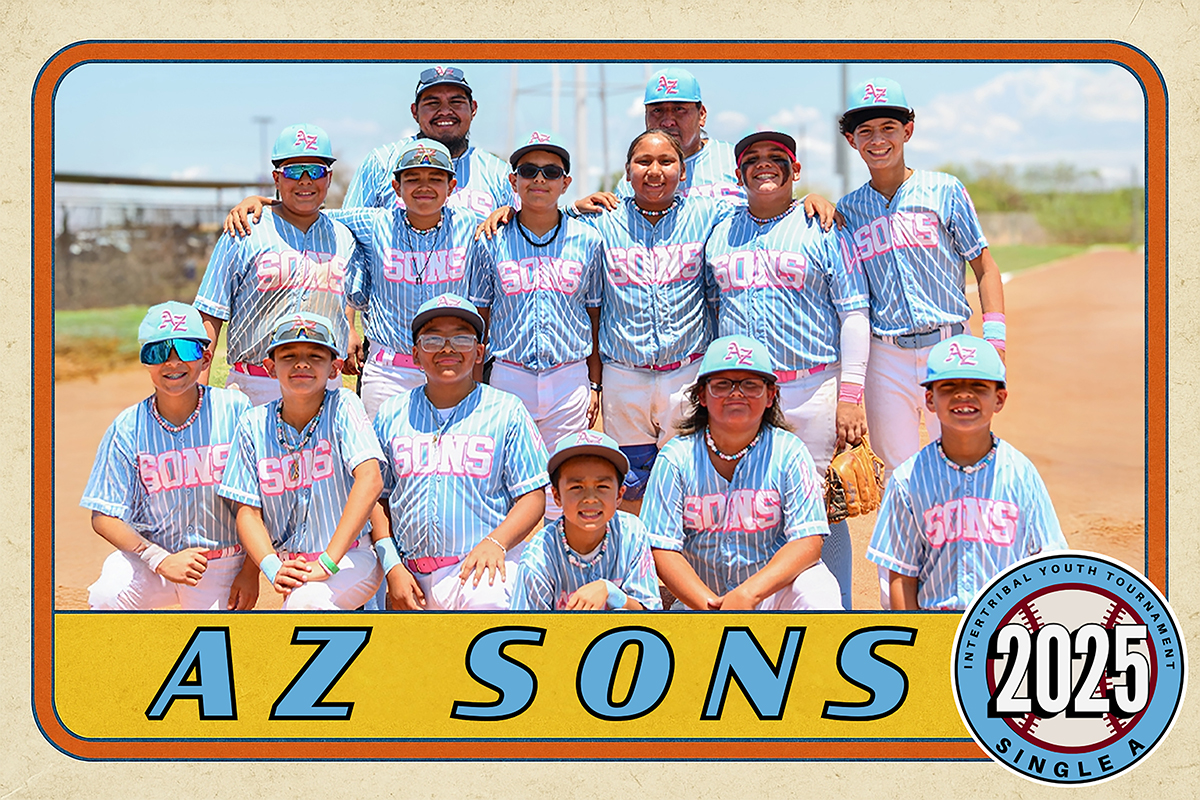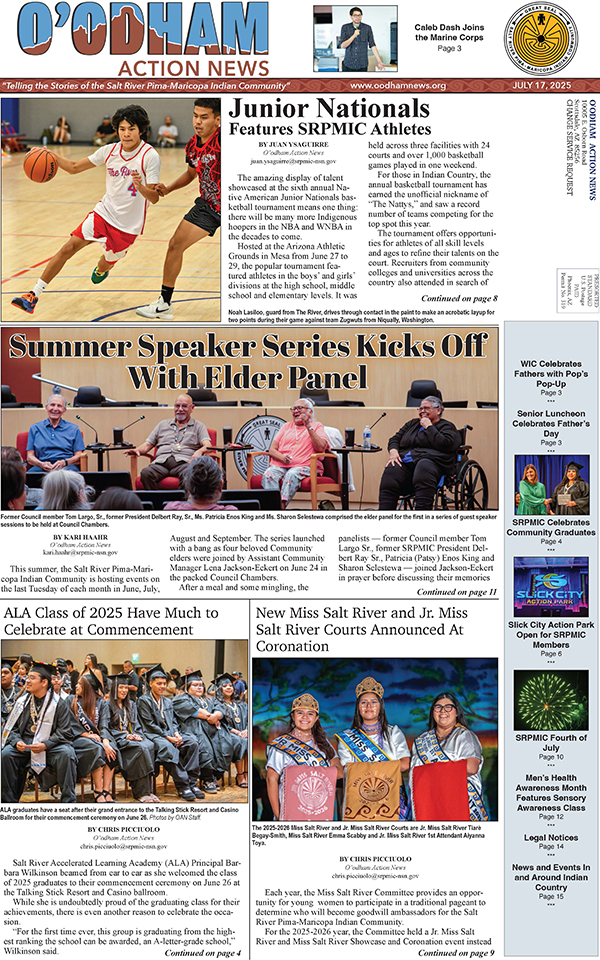VIEWS: 2045
February 13, 2020Emergency Response Team Holds First-Aid Training
The Salt River-Community Emergency Response Team (SR-CERT) holds Voluntary Organizations Active in Disaster (VOAD) training every month. On January 7, the SR-CERT held training in cardiopulmonary resuscitation (CPR) and the automated external defibrillator (AED) at the Two Waters Complex. The training was a refresher for those who are already CPR/AED certified and reviewed how to provide first aid, CPR and the AED in an emergency situation.
Fire Captain Robert Scabby of the Salt River Fire Department led the training. First he reviewed the basic items to include in a first-aid kit for the home or workplace. “Get familiarized with what is in a first-aid kit,” he said. “You might want to [be more] elaborate than just bandages and hydrogen peroxide; you might want to put some 4-by-4-inch gauze and little strips so you can wrap [injuries] and maybe some splints,” said Scabby. (See sidebar)
He also recommended scissors and gloves. He pointed out that latex gloves dry up and rip over time and need to be replaced on a regular basis, as well as rotating the other supplies in the first-aid kit. Good scissors are needed to open up the clothing of someone in a cardiac-arrest situation to expose the chest so the AED can be used. Clothing must be removed quickly so the patient can receive help immediately.
Using CPR and the AED
“If you are not CPR certified, the best thing to do is call 911,” said Scabby. “The police response time is three to four minutes and the fire response time is four to six minutes in the Community. The quicker you can get someone there, the quicker they can get CPR going.”
After you call 911 and the rescue crew is on the way, start CPR yourself if you are trained, explained Scabby. Three people should be helping: while one person is on the phone with the 911 dispatcher, another is doing CPR on the victim and another person is locating the AED. The AED is a machine used in cases of sudden cardiac arrest (when the victim’s heart is stopped). It is easy to use, with step-by-step instructions. It analyzes the heart’s rhythm, and if needed it will deliver an electrical shock to help the heart reestablish an effective rhythm. When you follow the instructions on the AED, the machine will tell you whether or not you need to apply a shock. An AED should be used only when the victim’s heart has stopped.
Today there are AEDs in many public locations, such as airports and stadiums, as well as workplaces. They are usually mounted on a wall with a sign saying “Emergency Defibrillator.” AEDs in the Community are located throughout the tribal government buildings as well as at local grocery stores and businesses.
If you are squeamish about doing mouth-to-mouth breathing on the victim, one important item for your first-aid kit is a CPR mask with a one-way valve, which prevents direct contact with the victim’s mouth, nose and face. They are sold through Amazon, Walmart and Costco, among others.
“You can blow into them and nothing will come back up,” said Scabby. “They will prevent your exposure to any infections from the victim, such as hepatitis B (HBV), hepatitis C (HCV) and human immunodeficiency virus (HIV).”
If the emergency involves an unconscious child, it’s likely that the cause will be something other than heart issues, Scabby explained.
“As for pediatrics, little kids just don’t fall over from a heart attack due to [a blocked heart artery]; that usually [happens in] adults who have unhealthy lifestyles. A child’s heart stops when the child is choking or getting electrocuted,” said Scabby. “To prevent choking or electrocution, fence your pool, place plastic covers on the outlets around your home, and keep small items like batteries and medicines out of the reach of children.”
Because children breathe faster than adults and have faster heart rates, the recommendation is to do CPR for one minute (60 seconds) and then call 911, explained Scabby. “[We need] you to recirculate that oxygen to feed their brain so they don’t suffer any permanent brain damage that may cause mental complications later in life. After you call 911, go back to performing CPR until paramedics arrive.”
Other Considerations
Before you render aid to the victim of illness or injury, first take a look around you to make sure you and the victim will be safe and there are no other potentially hazardous situations other than the current situation. If the victim’s injury is related to a traffic accident or a shooting, for example, make sure you and the victim are away from danger before starting first aid.
“You’re the most important person when something happens, so you have to think about other possible hazards,” said Scabby.
Scabby also touched on legal issues involving first aid. “If the person is able to respond, ask them for their consent before you touch them,” said Scabby. SRPMIC member Eric Schurz asked what to do if the victim is not conscious and can’t answer.
“The Good Samaritan Law [says] that when you are acting in good faith, you cannot get sued if you are certified with the proper training from CPR and/or CERT trainings,” said Scabby. “If you [are trained and] feel that it is safe, you can help them. But the best thing to do is call 911 as fast as you can so official first responders can provide care.”
If you would like to become a member of the VOAD SR-CERT group, the next three-day training starts on Saturday, February 22 (see sidebar). For more information, call Emergency Management Coordinator Terry Nelson at (480) 362-7929.

